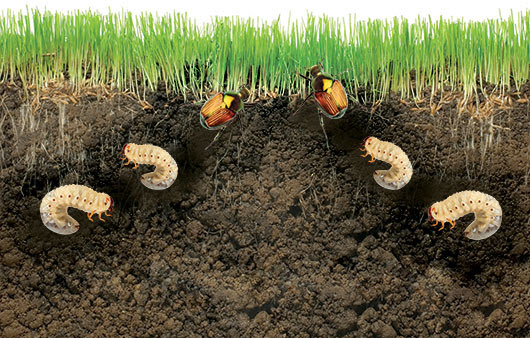While many insects can be beneficial to your lawn, grubs are not one of them. Grubs are the larval (or worm) state of many types of beetles. The beetles lay their eggs in your lawn, and the newly hatched worms work their way through the thatch and into the soil.
Grubs live and feed in the soil. It’s easy to miss them as they gradually cut the roots out from under your lawn until brown patches begin to appear and the grubs are finally discovered. Pull back the turf if you suspect grubs. If the lawn pulls up easily (like a carpet), you may find white grubs in the top inch or so of the soil.
Most beetles lay their eggs mid to late summer, and the young grubs do their greatest damage during the fall months. As the weather cools, most grubs burrow into the soil for the winter, and they return to the surface to feed again as the soil warms in the spring. After this spring feeding, the grubs pupate into adult beetles and begin the cycle again.
Grubs don’t disappear on their own. In fact, if left to their own devices, they can devour large areas of turf. The best chance to stop them is to treat for them as soon as they are found (if not before). Let us prevent (or stop) these unwelcome dinner guests before they cause severe damage and turf loss on your property.



